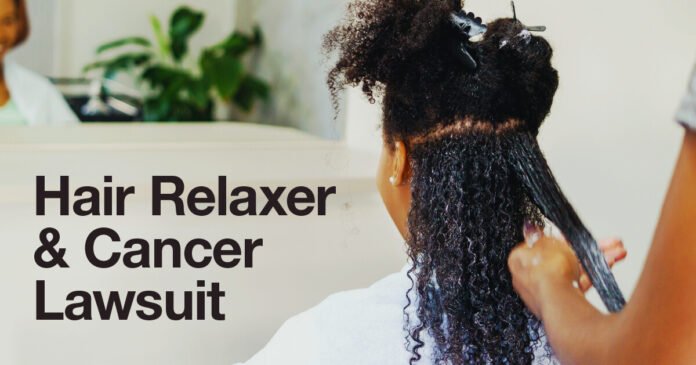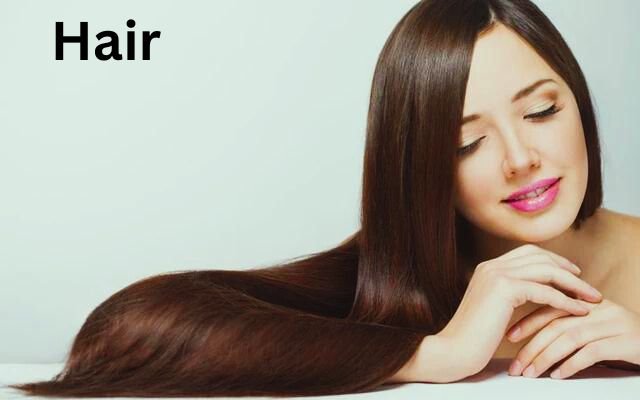Introduction:
Understanding hair relaxers
Hair relaxers are products that change the structure of hair to make it more manageable and straight. Strong alkaline chemicals like sodium hydroxide or guanidine hydroxide, which are commonly included in these treatments, cause the protein links in the hair shaft to dissolve, allowing the hair shaft to reorganize.
Link between hair relaxers and cancer
Numerous investigations have looked into the potential link between hair relaxers and cancer. The possible carcinogenicity of some compounds included in hair relaxer formulations, such as formaldehyde, which the International Agency for Research on Cancer (IARC) lists as a known human carcinogen, has been the subject of these investigations.
According to several research, there may be a connection between using hair relaxers that contain specific chemicals and a higher chance of developing some malignancies, including uterine fibroids and breast cancer. To completely comprehend the scope of this connection and the precise processes at play, additional study is necessary.
Studies supporting the link
Studies have demonstrated a link between the usage of hair relaxers and a higher risk of some cancers, such as uterine fibroids and breast cancer. For instance, women who used hair relaxers had a greater risk of breast cancer than women who did not use these products, according to a research published in the American Journal of Epidemiology.
“Studies supporting the link” are those that offer proof of a certain relationship or connection between variables or occurrences. In order to verify the suggested connection, these studies usually include empirical inquiries, data analysis, and statistical testing. They are essential for advancing scientific knowledge and guiding judgment in a variety of disciplines, including psychology, sociology, medicine, and economics.
Controversy and conflicting evidence
Still up for contention, though, is the precise nature of the hair relaxer-cancer link within the scientific community. Some studies have reported methodological errors and small sample numbers as reasons why they were unable to discover a meaningful link.
In problematic situations, where differing viewpoints and interpretations collide, controversy and contradicting evidence frequently surface, causing ambiguity and discussion among specialists and the general public alike. Divergent discoveries and viewpoints are a prevalent phenomena in fields including politics, science, health, and social concerns due to complicated circumstances and various techniques.
Potential risks and concerns
Experts advise avoiding using hair relaxers often or for extended periods of time owing to possible health hazards, even in the face of contradicting data. In addition to more serious health issues like cancer, these dangers might include damage to the hair follicles, breaking of the hair, and irritation of the scalp.
Depending on the situation, there might be a wide range of potential dangers and concerns; however, frequent ones include societal unrest, financial instability, health risks, environmental harm, and cybersecurity threats. Proactive mitigation techniques are frequently necessary to protect communities, businesses, and individuals from these dangers.
Regulatory measures and safety standards
To protect customer safety, regulatory bodies like the Food and Drug Administration (FDA) control the production and labeling of hair relaxer products. Critics counter that the laws in place do not do enough to address the possible health hazards connected to these items.
Governments and businesses use regulatory measures and safety standards as critical frameworks to guarantee the quality, safety, and compliance of goods, services, and operations. These measures include rules, laws, policies, and procedures aimed at reducing risks, safeguarding consumers, and upholding the general welfare in a number of areas, including food, transportation, healthcare, and workplace safety. Adherence to these standards frequently entails stringent testing, certification procedures, and continuous observation to maintain safety and legal obligations.
Safe usage practices
It’s essential to use hair relaxers safely in order to reduce any possible health hazards. This entails paying close attention to the manufacturer’s instructions, testing patches before using them, and limiting your exposure to the chemicals in these goods.
In order to reduce hazards and guarantee the safe operation of various instruments, equipment, or items, safe usage procedures entail adhering to rules and taking measures. This entails carefully reading instruction manuals, donning the proper safety gear, only operating equipment in approved locations, avoiding misuse, and carrying out routine maintenance inspections.
Alternative options
If people are worried about the possible hazards associated with hair relaxers, there are other solutions. Without the need for chemical treatments, natural hair care procedures like braiding, twisting, or employing heat-free styling techniques can assist create desired hairstyles.
“Alternative options” are options or solutions that aren’t the standard or main ones. They provide many methods or alternatives to accomplish the same objective or deal with a specific problem. When compared to conventional techniques, these solutions can provide flexibility, inventiveness, and occasionally cost-effectiveness. Alternative energy sources, alternative medical procedures, and alternative educational approaches are a few examples.
Consulting with professionals
It is best to speak with a licensed hair care expert before making any decisions on hair care products. These professionals may offer tailored advice depending on each person’s unique hair type, preferences, and concerns.
Consulting with specialists entails obtaining professional guidance or assistance to handle certain issues or to get understanding in a variety of areas, including business, finance, healthcare, legal issues, and more. Professionals offer specific expertise and direction to assist people or organizations in making wise decisions and effectively achieving their objectives.
Consumer awareness and education
Giving consumers the information they need to make educated decisions regarding hair care products is essential. Through diligent examination of product labels, comprehension of component lists, and ongoing awareness of possible hazards, consumers may proactively safeguard their well-being.
The term “consumer awareness and education” describes programs designed to educate people about their rights and obligations as customers. It entails teaching customers on the costs, safety, and quality of products as well as their alternatives in the market. Their empowerment shields them against unfair practices and enables them to make well-informed judgments.
Healthy hair practices
It’s crucial to preserve the general health of your hair in addition to staying away from potentially dangerous substances. Strong, healthy hair may be encouraged by maintaining hydration, eating a balanced diet, and limiting heat and chemical exposure.
A balanced diet high in vitamins and minerals, minimizing chemical treatments, cutting off split ends on a regular basis, using conditioner to moisturize and protect strands, washing hair with a mild shampoo on a regular basis, avoiding excessive heat styling, and shielding hair from the elements with hats or scarves when needed are all examples of healthy hair practices.
Addressing concerns and misconceptions
Lastly, it’s critical to dispel widespread myths and anxieties about hair relaxers and cancer. By dispelling misconceptions and offering correct information, people may confidently choose their hair care regimens.
In order to allay worries and misconceptions, precise information and explanation must be given in order to remove any uncertainty or misperception. To identify the core of an issue and properly treat it, it takes patience, empathy, and open communication. Through this process, ties between people or organizations are strengthened and trust is fostered.



